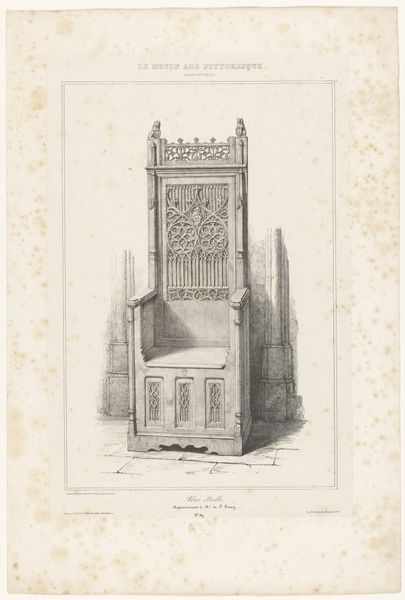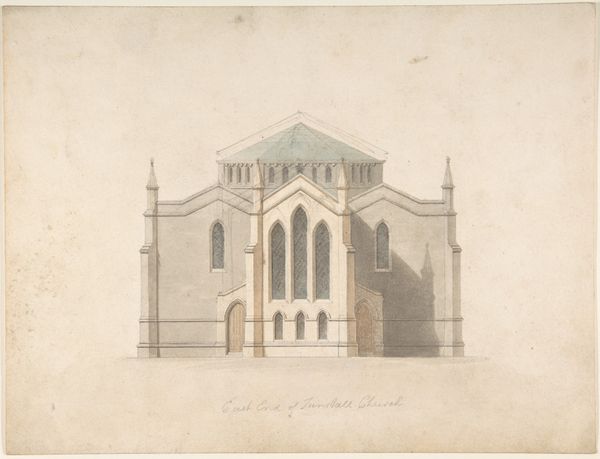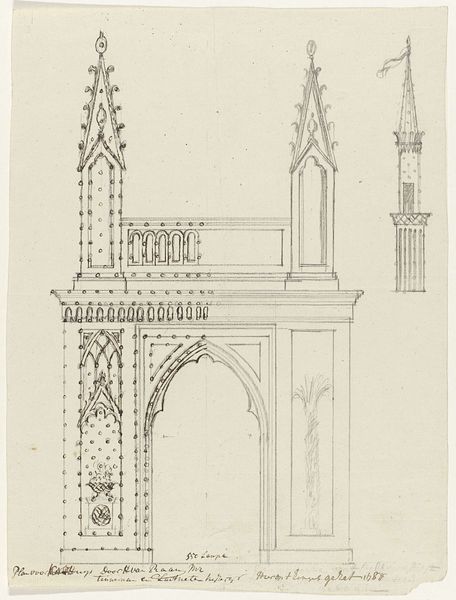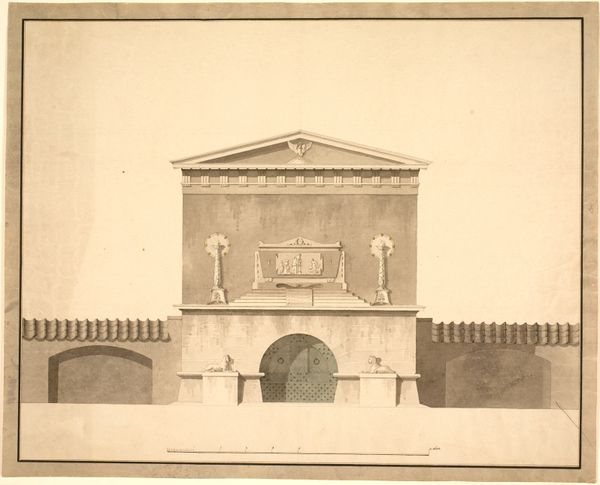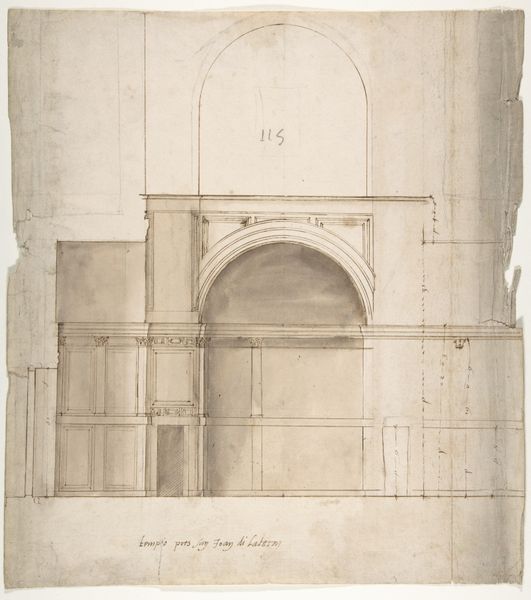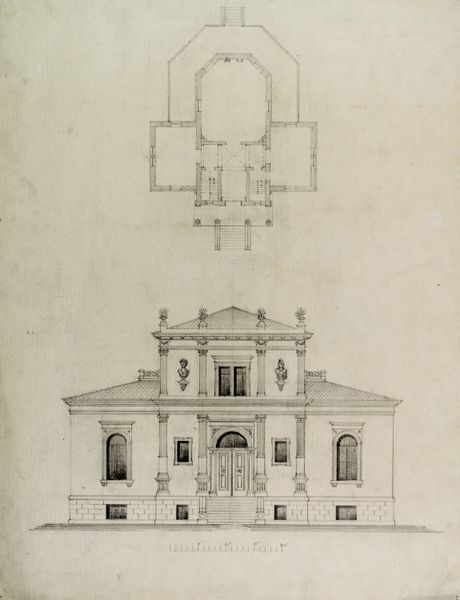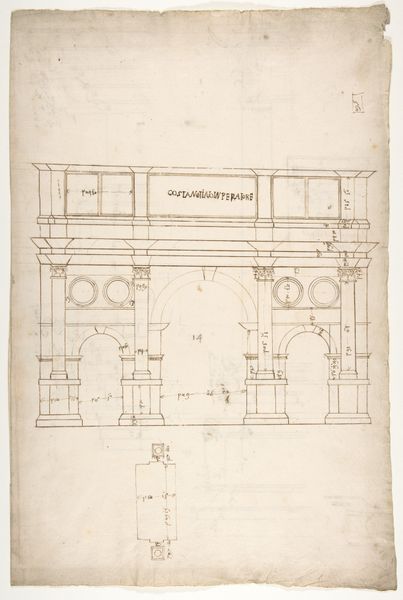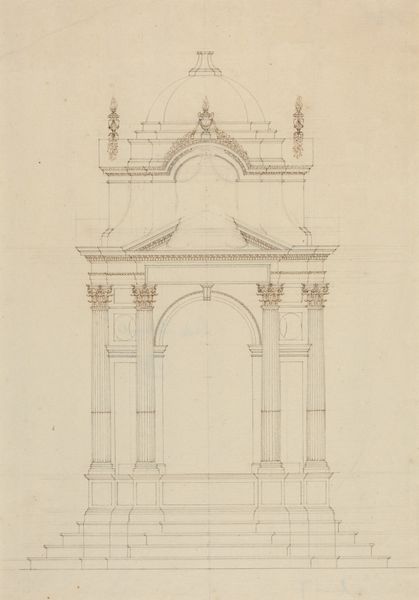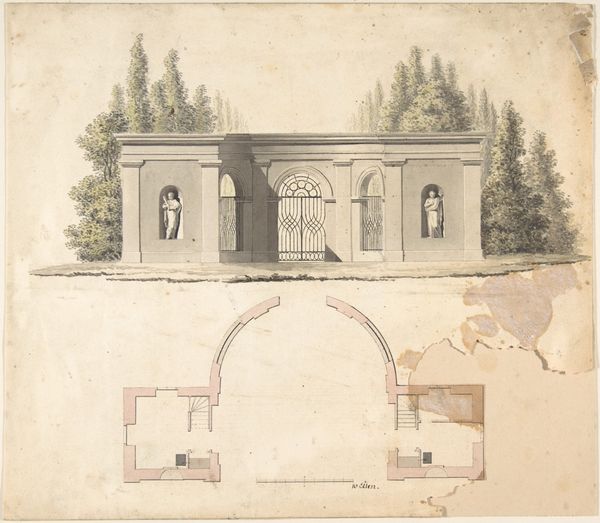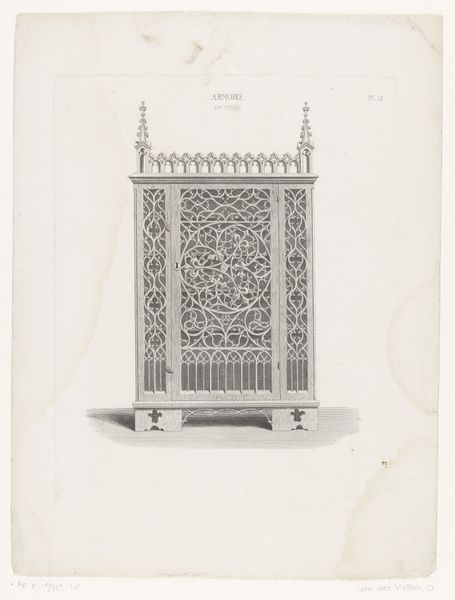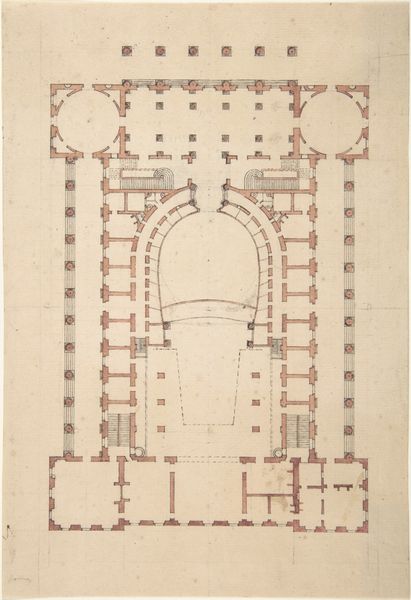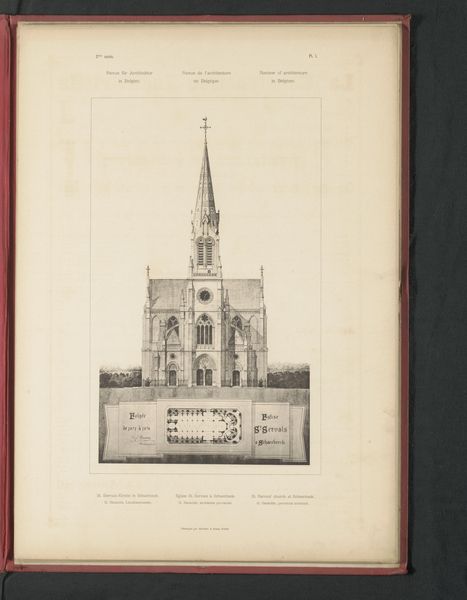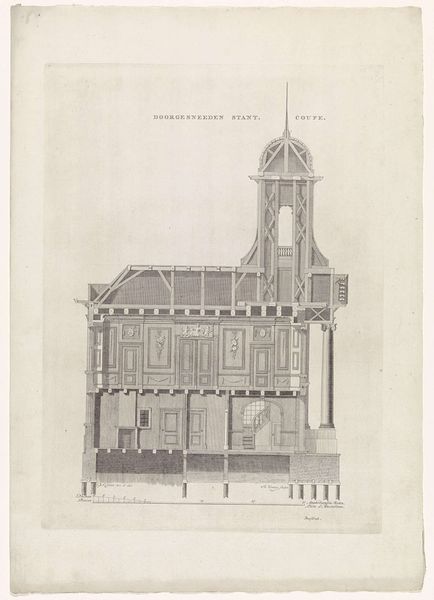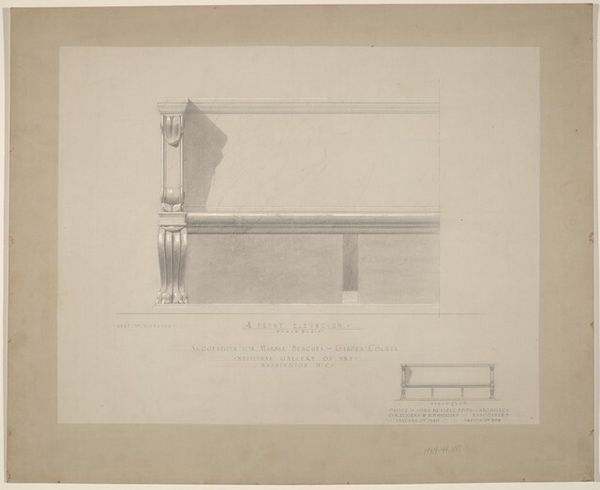
drawing, print, paper, pencil, architecture
#
drawing
#
neoclassicism
# print
#
paper
#
romanticism
#
pencil
#
cityscape
#
architecture
Dimensions: sheet: 14 9/16 x 11 9/16 in. (37 x 29.4 cm)
Copyright: Public Domain
Curator: William Hurst created "Entrance to Barlboro' Hall" sometime between 1815 and 1825. It’s a drawing, rendered in pencil and print on paper, held in the collection of the Metropolitan Museum of Art. What's your immediate take on this piece? Editor: Stark. Austere. Almost cold, despite the apparent symmetry and neoclassical elements. The pale hues amplify the feeling, though I confess I'm drawn in by the rigid linearity and those castellated details. It’s both inviting and forbidding simultaneously. Curator: That sense of controlled entry speaks volumes. The archway itself functions as a threshold, but what kind of transition does it represent, and what is the implication of the schematic floor plan displayed? Hurst seems concerned not only with access but also with the underlying order. Editor: And look at the materiality of that "order." The lines, crisp and precise, were painstakingly drawn by hand using a pencil; while also reproduced via print. Think about the social context here: Is this image meant for a wealthy patron considering renovations, or is it a more widely circulated depiction intended for broader consumption? Curator: An interesting question, as these kinds of images often symbolize power, status, or an imagined idyllic past. Those architectural features clearly reference medieval castles, evoking notions of nobility and lineage, even if such connections were purely aspirational for the landowners. Consider, too, the psychological impact, offering reassurance in permanence. Editor: Well, reassuring perhaps to some, oppressive to others! What was the lived experience like inside the hall, and how does it connect to who owned it, who built it, and how? By using printing as one of the artistic mediums, how did the circulation of images like this contribute to the perpetuation of the very social dynamics reflected? I am eager to understand the conditions surrounding the production and viewing of such an image, the politics of this representation and its broader impact in culture. Curator: All valid points! Hurst's work reminds us how architecture—even depicted on paper—can serve as both a physical structure and a symbolic expression of deeply held social values. It also underscores that cultural memories of a real or imagined past exert a subtle and profound effect on shaping societal values in the present. Editor: Indeed. Material production processes create real, often unequal, power relationships that, whether they are subtle or monumental, must always be brought to light.
Comments
No comments
Be the first to comment and join the conversation on the ultimate creative platform.
